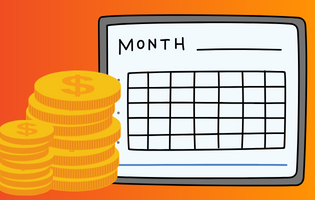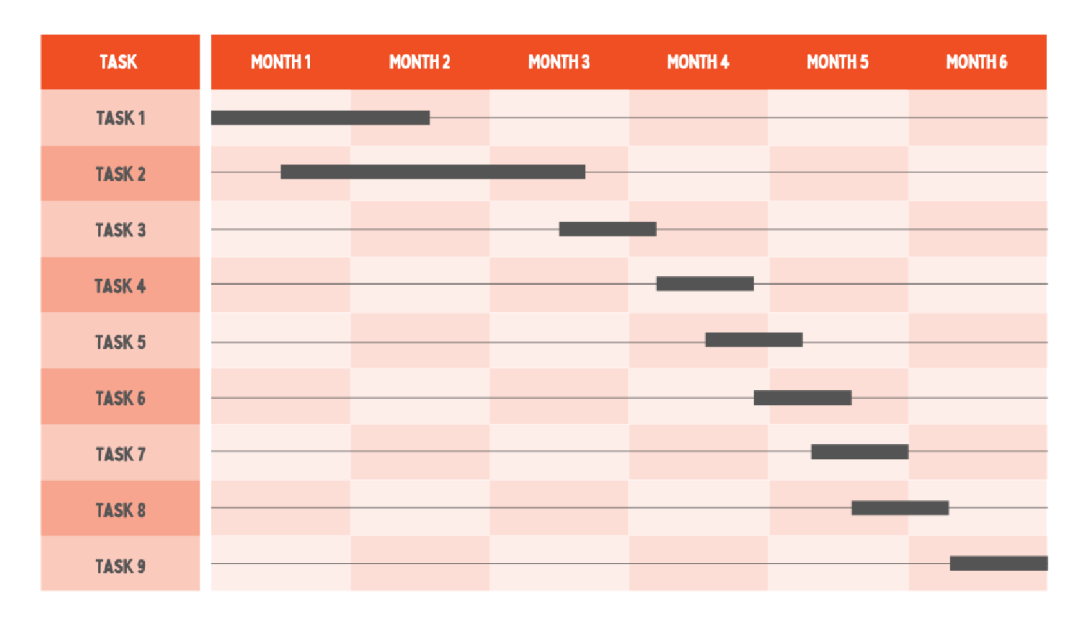Getting started with grants
In 2024, higher education budgets are shrinking. One way to deal with these budget restrictions is to apply for grant funding, which can be used for training, travel, research, and equipment, including technology.
However, applying for and securing grant funding is not necessarily a skill you will learn as you work your way up the career ladder. Moreover, grants for higher education are a little harder to find than for K-12.
To help you succeed, we've put together a small guide to help you get started with grant writing for education.
In this guide, we’ll cover:
- Finding relevant grants for STEM education
- Writing your application
- Improving your chances

Looking for a list of teaching grants? We've collected 14 grants for life science teachers, updated in 2024. Check them out here.
Finding relevant grants for STEM education
The first step is to identify the main use of the funding. Are you looking to fund a whole research project (for example, an education intervention study), your travel expenses to a conference or to collaborate with a peer, or the upfront cost of lab equipment or software? What you plan to spend the money on will change the type of grant you apply for.
Also consider what unique characteristics you, your students, or your institution have which may qualify you for specific grants; for example, are you a Hispanic-Serving Institution (HSI), a Historically Black College or University (HBCU), or other Minority-Serving Institution (MSI)?
Once you’ve established what kind of grant you’re looking for, and whether you fit any additional criteria, the search begins. Cast your net wide and make a list of all possible grants available to you for this project.
This can be an overwhelming process, so start with the basics and then expand outwards.
- See if there are any grants for teaching or curriculum development available to you within your department.
- See if there are any grants available within your institution - the Center for Teaching and Learning is a good place to start. For example, Harvard University offers Spark Grants to their faculty that fund teaching projects up to $15,000.
- Search for grants given out by large government institutions; in the US, the federal government distributes grants through the National Science Foundation (NSF).
- Look into organizations and professional bodies related to your specific field, such as groups whose conferences you might attend, and see what they have available. In the context of physiology education, you might look to the American Physiological Society (APS) - at least two grants are listed in our updated grant resource.
- Search for grants given out by philanthropic foundations or societies that focus on scientific and educational outcomes.
- Look into the awards and grants offered by companies involved in the field; for example, ADInstruments offers the Macknight Innovative Educator Award for physiology educators.
- Contact colleagues and ask for suggestions.
Remember that the terms of the grants don't always need to be explicitly related to STEM education. For example, charitable organizations like the Awesome Foundation provide no-strings-attached grants of $1000 for "awesome" projects - you just need to tell them why you think your work is awesome!
You can also find grants through funding databases.
| Free databases | Paid databases |
|---|---|
Ultimately, you can save time with this list of 14 grants for life science teachers, updated in 2024. Check them out here.
Narrow the pool
Now that you have a list of potential grants, it’s time to comb through them. Carefully read each grant’s requirements to ensure you are a viable candidate. You don’t want to spend time applying for a grant you’re not eligible for.
You'll also want to double-check that the grants are still open - their deadlines may have passed or the grant may have lapsed. The databases are not always kept up-to-date and can, frustratingly, show outdated grants.
Rank what remains
Time is a limited resource, and writing too many applications may leave you no time for your other work. Sort through your list of viable grants and rank them based on:
- How much of your costs they will cover
- Their specificity to your work or field
- How closely your goals fit their brief (for example, any grant themes or target audiences they seek to serve)
Ranking will identify which applications to prioritize, as there is often not enough time for multiple applications.
There is nothing wrong with applying to multiple funding bodies for the same project, so long as you have the time and it is not against their requirements. If you do end up with a double-up, covering more than 100% of the project’s cost, you can easily get back in contact with the grant organizations so that they can reassign those excess funds to other applicants.
Mark your calendar
Planning ahead is key. You will need plenty of time to write and review your application before submitting it. Mark the submission dates of the grants on your calendar, and plan enough time to draft, engage colleagues in review, and rewrite based on feedback. Prioritize by rank, and stick to your schedule.

Writing the application
There is a lot of variability in the information a grant application will require. Understanding those requirements, and sticking to them, is crucial. In general, a grant application will be expected to include:
- Details about the applicants
- A budget
- A project timeline
- A project proposal
Tip - Make a checklist or spreadsheet of the requirements of the grant and use this to make sure that you have fulfilled each requirement.
Details about the applicants
At a minimum, this part of the application should include your name, institutional affiliation, and contact information. You may be asked to supply the details of others involved in the project, or to supply a referral letter from a colleague in the faculty. Some grants may require your academic CV.
Budget
You must show how you’ll use the money you’re applying for. There is usually some lee-way here, with many grants allowing a percentage of the total to remain available for discretionary activities. However, this budget should be as close as possible to the actual spending you’ll do and account for the entire amount you’ve requested.
Include everything from equipment hire or purchase, consumables, training and travel costs (and, if you are conducting research as part of the grant, you may also include participant vouchers, researcher time, etc.). Cost these out as accurately as possible: this may require you to request quotes for budget items you have not purchased before. Be prepared that some grants may require justification as to your choices: for example, why a more expensive piece of equipment is necessary due to the specific requirements of your project.
Keep it clean and simple. Use a spreadsheet template. Break it up into sections for each type of expense. You want the judging panel to be able to absorb this information quickly, so make it easy for them.
Project timeline
This is a simple timeline of what you will achieve and when you expect to achieve it.
Be realistic about what you can do within your budget and timeframe. It can be tempting to over-promise to make your application more appealing, but grant judges will generally know what a realistic timeframe looks like.
A clear and accurate timeline will show that you understand the demands of your project and can manage your time effectively.

A Gannt chart is a useful way to show your timeline simply and clearly.
Project proposal
This will be the most significant portion of your application. Granting bodies may have specific requirements for what to include, so be sure to focus on the areas they have highlighted (e.g. themes, target audiences, desired outcomes) and to stay within any specified word or page counts.
Start with an elevator pitch - a couple of sentences that establish what you’re doing and why it is important. You might not end up including this in the application, but forcing yourself to distill your project down can help you see it more clearly and will help you to maintain a central focus while writing the application. Everything comes back to that central focus, helping you to stay on track and avoid branching off on interesting but unnecessary tangents.
Along with addressing any specific questions within the application guidelines, your proposal should answer the following questions:
- What is your need?
- How many students will be impacted by the project (make sure to consider minority groups)?
- What is the evidence for your proposed approach?
- How will the grant transform your students' learning outcomes?
- How will the success of the project be measured?
- If necessary - How will you expand on the project within your institution or community?
If conducting research around the project:
- What is your hypothesis?
- What is the significance of that hypothesis?
- What background information supports your hypothesis?
- What is your research design and methodology?
- Why did you choose these methods?
- Why are you or your team members the right people to conduct this research?
- What are your expected outcomes?
- What is the significance of this research, whether or not it supports your hypothesis?
For more information on active learning and the benefits of using edtech in your class, have a look at our free eBook, A Guide to Transforming Traditional Undergraduate Science Education.
Improving your chances
Ask questions
Most organizations will have administrative staff available to answer your questions. These people are a hugely valuable resource and can give you more insight into the organization and grant process; you should contact them early in the application process if you have any questions or concerns.
Look at successful applications
Some organizations will make past successful submissions available to view. Look through the recent successful submissions, note what stands out to you, and what their success tells you about how this organization judges applications.
If you have a colleague who has successfully applied for the grant, contact them and ask them for advice. They may have some particular insights into the process now that they’ve been through it.
Leave nothing up to interpretation
When a grant application has specific requirements, signpost where you will address them in your project proposal. Make them into subheadings and address them specifically. Highlight them in the text. Include an appendix at the end of the application that goes through each one. Make it clear to the judges that you understand their requirements and will fulfil them to the best of your ability.
This isn’t the time for subtlety. The people judging your application will be weighing it against a stack of similar applications. They need to easily and quickly identify whether you should be excluded or stay in the running, and how your proposal compares to similar proposals. Make it easy for them.
Write for the reader
Find out what kind of audience you are writing for. Not everyone reading your application will always be familiar with the fields of education or science: for example, when applying for more general grants from foundations. Ensure that your application is specific enough to detail what you’re doing and why, but also understandable by someone outside your area of expertise.
While you should run your applications past colleagues for review, also ask friends or family members to read it over and see if it makes sense to them. This will help you to identify areas that make sense to you, but may be confusing to others.
Good luck!
With these tips under your belt, we hope that you're feeling more equipped to secure funding for your science courses. You deserve the support!
Looking for more helpful education resources and updates?
Want to make sure your teaching is state-of-the-art?
Our online learning platform, Lt, saves you time and engages your students in active learning. Combine with Lt Sensors for hands-on, active learning in the lab. Experience the platform for yourself!
